One of the most important covert operations of the Second World War, Operation Anthropoid was the assassination of Reinhard Heydrich, the Nazi commander who led the Gestapo and had chaired the planning of the horrifying “final solution”. A daring operation behind Nazi lines, it achieved its aims, but with terrible consequences.
Special Group D
When Czechoslovakia was occupied by Nazi Germany, some of its leaders went on the run. Forming a government in exile, they sought to continue fighting the Nazis.
In 1941, they formed Special Group D of the Ministry of Defence. The purpose of this group was to send missions back into Czechoslovakia, where they would sabotage the occupiers and gather information on their activities.
This involved similar skills and objectives to the British Special Operations Executive (SOE). Backed by the British government, Special Group D used facilities set up by the SOE to train their agents.
Reinhard Heydrich and Czechoslovakia
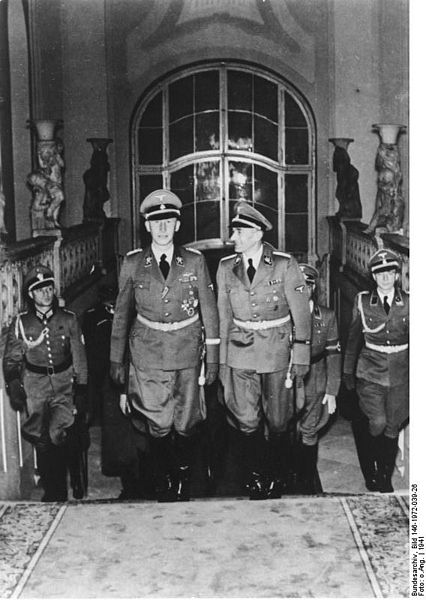
While the Czech government was looking for ways to free their country, it was falling into the hands of one of the most monstrous figures of the Nazi regime – Reinhard Heydrich.
A close ally of Himmler, Heydrich helped to secure the dominance of the SS within Nazi Germany and was made the head of the Gestapo, the secret police. As chair of the conference that planned the “final solution to the Jewish problem”, he was one of the key architects of the Holocaust.
Put in charge of running occupied Czechoslovakia, he treated the country with a brutality fitting his past acts. Hundreds of political opponents were disposed of, and he earned nicknames such as “Hangman Heydrich” and “The Butcher of Prague”.
When the Czech government decided that they wanted to punish the Nazi occupiers for their brutality, Heydrich was the natural target.
Preparing for Anthropoid
In October 1941, Special Group D and the SOE began preparations for Operation Anthropoid, the assassination of Reinhard Heydrich. Two Czech soldiers were chosen for the task – Jozef Gabčík and Jan Kubiš, the latter replacing Karel Svoboda after Svoboda was injured during parachute training.
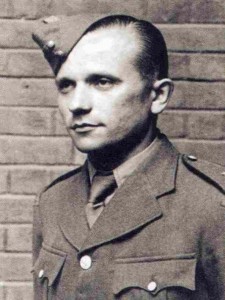
Gabčík and Kubiš trained in parachuting and combat techniques suitable for an assassination. But while they were preparing, the Nazis clamped down on resistance in Czechoslovakia. The operation had to be postponed while other operatives re-established links with the Czech resistance.
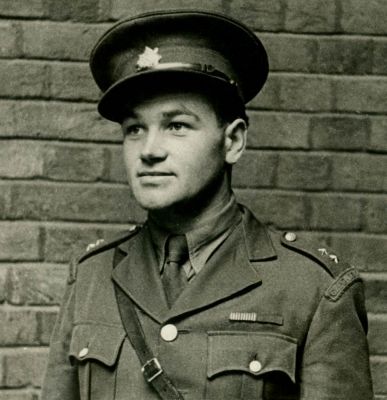
Into Czechoslovakia
On the night of December 28th, 1941, an RAF Halifax bomber dropped Gabčík and Kubiš into Czechoslovakia. Heavy snow combined with anti-aircraft fire led the crew to misjudge the landing site so that the two agents were dropped 50 miles from their intended landing point.
Gabčík and Kubiš made contact with the resistance, who provided treatment for an injury Gabčík had taken during the landing. They hid their equipment and set to observing Heydrich.
Meanwhile, the Nazis, having guessed that the bomber had dropped men off, were scouring the area for signs of Allied agents.
The Attack
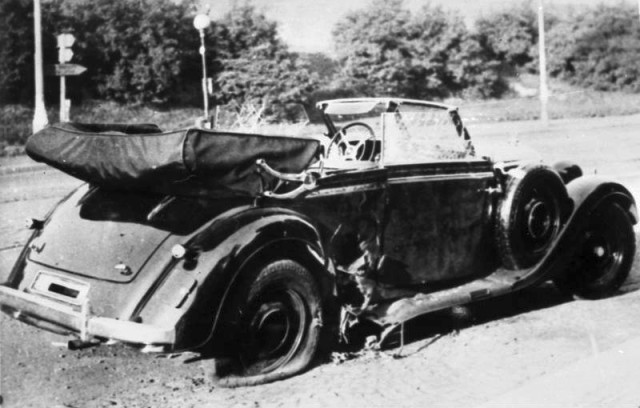
In April 1942, Heydrich and his wife moved from Prague Castle to a nearby château. Heydrich’s office was still at Prague Castle, and his journeys between the two places gave Gabčík and Kubiš the opportunity they needed. Despite Himmler’s concerns that someone might try to kill him, Heydrich refused to have an escort on these journeys, travelling with only his driver in an open-topped car. He believed that more protection would damage Germany’s reputation by showing fear.
Around 10:30 on May 27th, Heydrich’s car slowed on a tight bend on the way to Prague Castle. Gabčík stepped into the road with a Sten sub-machine gun and tried to open fire, but the gun jammed. Heydrich ordered his drive, Johannes Klein, to stop the car, then stood and fired back.
Kubiš threw a bomb but missed, and it landed outside the car. It exploded, injuring Kubiš, Heydrich, and a bystander.
Thinking that they had failed, the two assassins fled.
Little did they know that a large piece of metal was lodged in Heydrich’s back, an injury which would eventually prove fatal.
Flight and Hiding
Evading pursuit by Klein and the badly injured Heydrich, Gabčík and Kubiš made their way to a safe house in Prague. Kubiš had been wounded in the head and was treated by a doctor in the Czech resistance.
Massive police searches made life difficult for them and the Czech resistance. A preacher at the Greek Orthodox Karel Boromejsky church eventually gained permission from Bishop Gorazd to hide the Special Group D agents and five others in the church crypt.
Death and Reprisals
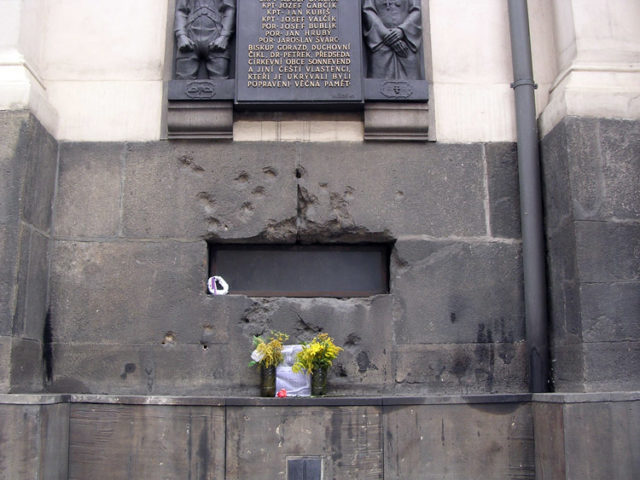
Heydrich was transported by a passing delivery lorry to the Bulovka Hospital, where he arrived just after 11:00. A radiograph revealed the severity of his injuries, and after insisting on being treated by a senior German doctor, he was operated on under general anaesthetic.
Having survived the operation, Heydrich came down with an infection. On June 3rd, he appeared briefly to be recovering, but it was a false hope. He collapsed into a coma and died on June 4th.
Reprisals came quickly from the German authorities. Over 5,000 Czechs, many of them Jews, were killed. The entire mining village of Lidice was destroyed after it was erroneously linked to the assassination attempt.
The Nazis wanted to terrify people out of any further attacks.
The Final Showdown
As the reprisals mounted, Gabčík and Kubiš were horrified at what they had unleashed. They considered public suicide, together with messages about their actions, as a way to try to end the horror.
Bishop Gorazd became unhappy at hiding the men in his church, but the resistance could find no safe place to move them to.
Another agent, Karel Čurda, became so worn down by guilt that he handed himself over to the Gestapo and revealed the identity of the assassins and other resistance figures. Arrests led the Nazis to the church, and early in the morning of June 18th they attacked. Kubiš and two others died in the two-hour battle that followed. Gabčík and the other three men hiding there committed suicide rather than be captured.
Operation Anthropoid had succeeded in taking out Heydrich, but it cost Czechoslovakia dearly.
Source:
Russell Phillips (2016), A Ray of Light: Reinhard Heydrich, Lidice, and the North Staffordshire Miners.
